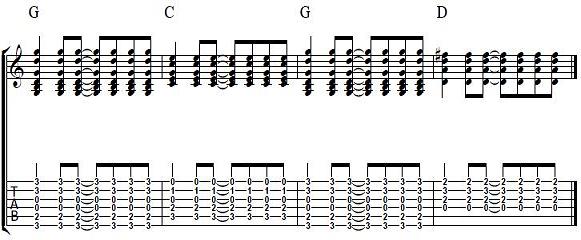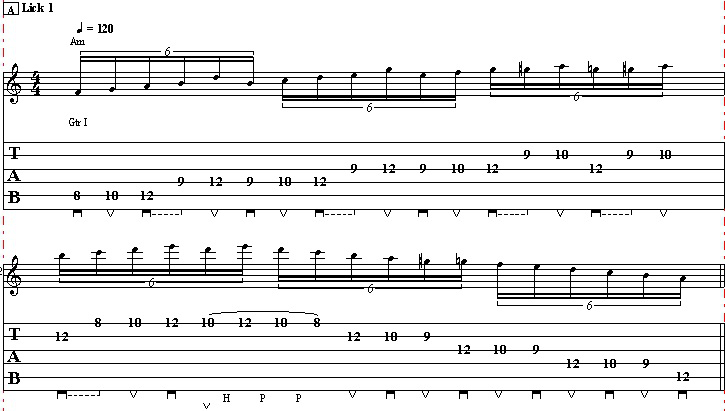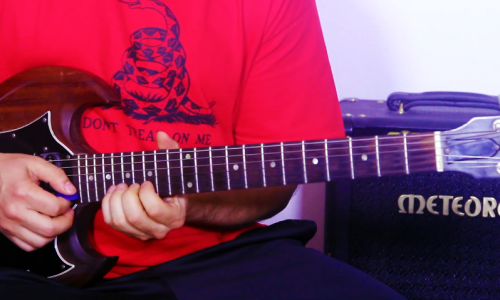Hey guys! Check out the latest guitar lesson from Jon MacLennan, about a cool strumming patterns with some basic chords in the style of Van Morrison… watch the video and please like us and comment on youtube. Also do me a favor and subscribe to our Youtube channel!!!
https://www.youtube.com/watch?feature=player_embedded&v=TiWNoOxCm0s
 Hey, how’s it going, everybody?
My name is John McClennan and I’m
here today with guitarcontrol.com,
bringing you this video blog lesson.
Today I want to talk about just a
very classic strumming pattern, one
of the most common ones you’re going
to hear out there and today I’m just
using for reference is sort of the
Van Morrison style, like a
“Brown Eyed Girl” strumming pattern.
Let’s jump into this here.
We’re looking at, chord wise, a G and E,
a C and then a G and then to a D. So let
me break those chords down for you.
You’ve got 3rd fret, 2nd fret, open, open,
3rd fret, 3rd fret. And then for the C
you’re going to have 3rd fret, 2nd fret,
open string, 1st fret, open string.
And then finally, the D is going to be
open D, 2nd fret, 3rd fret, 2nd fret.
So again, be sure to click the link below
for the tabs for those shapes if you didn’t
get that.
Let’s jump into the rhythm here.
What you’re going to do is you’re going to
play on the first beat of the measure.
Again, we’ve got four beats in a measure:
one, two, three, four. So you’re going to
play one and then you’re going to play two-and.
And those are eighth notes on the second beat.
So it’s one, two-and. And then three you’re
not going to play. You’re going to come back up,
and-four-and.
I like to think of this rhythm as my hand is
constantly doing eighth notes, like this:
one-and, two-and, three-and, four-and.
So just don’t play and just let your hand go
really loosely like this and say, one-and,
two-and, three-and, four-and.
Now what you’re going to do is you’re just
going to omit certain patterns. But when I
play this, look at my right hand. It’s just
constantly going like this, down-up, down-up
so that I get in the flow of the music and
I’m subdividing in those eighth note patterns
so that I’m not trying to think mechanically
as like a series of like down, down-up, up,
up, down, up. Which, by the way, I mean, we
can reference that. Down, down-up, up-down-up.
But what I want you to think about is the eighth
notes. One-and, two-and, three-and, four-and.
You may have your G and your C and your D
together and you think, oh, this is easy.
But let me tell you, playing that pattern
and giving it a great feel, say, with a
metronome is a whole other deal. You really
got to work on that strumming.
I’m also using a thin pick. I like a thin pick
when I’m just strumming because it just makes
me feel like I’m floating on the clouds. It’s
just a really light sound and especially when
I’m recording and I get the sound of the pick.
I really like that.
Again, the pattern is going to go like this:
one, two-and, three-and, four-and. Forget about
changing chords; just play on one chord and get
comfortable with the right hand.
I’m holding the pick really light and again,
my hand is just so loose. It’s like I’m strumming
a ukulele in a pineapple field. Again, here’s the
pattern through the chord progression.
One more thing I want to talk about is when you’re
playing that C chord, I bring my thumb up over and
I just mute that string. Or if that’s hard for you,
have your third finger come up and just lightly come
into contact with the string. I’m not pushing down;
I’m not fretting the note like this with my thumb,
but I’m just coming into contact with the string
so that it’s muted.
One of the most common things I hear when people
are strumming this is the C and the low E is just
over-powering it and just bogging-down the chord.
People will say, oh, I’ll be real careful; I’m not
going to strum it. But then they get up on stage
and they get nervous or something and all of a
sudden they don’t even know that they’re doing it.
The point is, if you’re not playing it, mute it.
Find some way. I’ll use this part of my hand,
I’ll use my thumb, whatever.
Again, be sure to click the links below for
the tabs and this is sort of just a strumming
patterns 101. We’ll catch you in the next video.
Thanks for watching.
Hey, how’s it going, everybody?
My name is John McClennan and I’m
here today with guitarcontrol.com,
bringing you this video blog lesson.
Today I want to talk about just a
very classic strumming pattern, one
of the most common ones you’re going
to hear out there and today I’m just
using for reference is sort of the
Van Morrison style, like a
“Brown Eyed Girl” strumming pattern.
Let’s jump into this here.
We’re looking at, chord wise, a G and E,
a C and then a G and then to a D. So let
me break those chords down for you.
You’ve got 3rd fret, 2nd fret, open, open,
3rd fret, 3rd fret. And then for the C
you’re going to have 3rd fret, 2nd fret,
open string, 1st fret, open string.
And then finally, the D is going to be
open D, 2nd fret, 3rd fret, 2nd fret.
So again, be sure to click the link below
for the tabs for those shapes if you didn’t
get that.
Let’s jump into the rhythm here.
What you’re going to do is you’re going to
play on the first beat of the measure.
Again, we’ve got four beats in a measure:
one, two, three, four. So you’re going to
play one and then you’re going to play two-and.
And those are eighth notes on the second beat.
So it’s one, two-and. And then three you’re
not going to play. You’re going to come back up,
and-four-and.
I like to think of this rhythm as my hand is
constantly doing eighth notes, like this:
one-and, two-and, three-and, four-and.
So just don’t play and just let your hand go
really loosely like this and say, one-and,
two-and, three-and, four-and.
Now what you’re going to do is you’re just
going to omit certain patterns. But when I
play this, look at my right hand. It’s just
constantly going like this, down-up, down-up
so that I get in the flow of the music and
I’m subdividing in those eighth note patterns
so that I’m not trying to think mechanically
as like a series of like down, down-up, up,
up, down, up. Which, by the way, I mean, we
can reference that. Down, down-up, up-down-up.
But what I want you to think about is the eighth
notes. One-and, two-and, three-and, four-and.
You may have your G and your C and your D
together and you think, oh, this is easy.
But let me tell you, playing that pattern
and giving it a great feel, say, with a
metronome is a whole other deal. You really
got to work on that strumming.
I’m also using a thin pick. I like a thin pick
when I’m just strumming because it just makes
me feel like I’m floating on the clouds. It’s
just a really light sound and especially when
I’m recording and I get the sound of the pick.
I really like that.
Again, the pattern is going to go like this:
one, two-and, three-and, four-and. Forget about
changing chords; just play on one chord and get
comfortable with the right hand.
I’m holding the pick really light and again,
my hand is just so loose. It’s like I’m strumming
a ukulele in a pineapple field. Again, here’s the
pattern through the chord progression.
One more thing I want to talk about is when you’re
playing that C chord, I bring my thumb up over and
I just mute that string. Or if that’s hard for you,
have your third finger come up and just lightly come
into contact with the string. I’m not pushing down;
I’m not fretting the note like this with my thumb,
but I’m just coming into contact with the string
so that it’s muted.
One of the most common things I hear when people
are strumming this is the C and the low E is just
over-powering it and just bogging-down the chord.
People will say, oh, I’ll be real careful; I’m not
going to strum it. But then they get up on stage
and they get nervous or something and all of a
sudden they don’t even know that they’re doing it.
The point is, if you’re not playing it, mute it.
Find some way. I’ll use this part of my hand,
I’ll use my thumb, whatever.
Again, be sure to click the links below for
the tabs and this is sort of just a strumming
patterns 101. We’ll catch you in the next video.
Thanks for watching.



